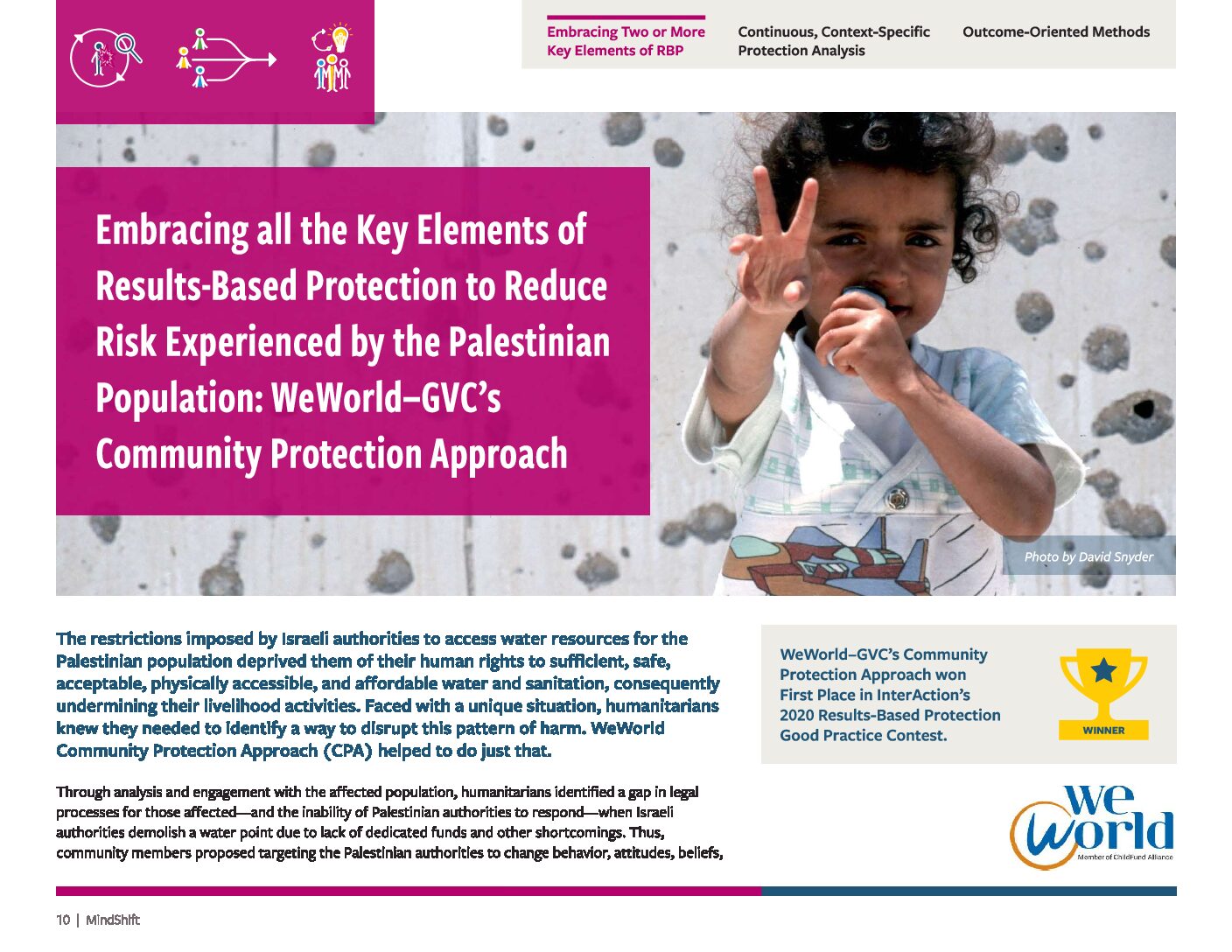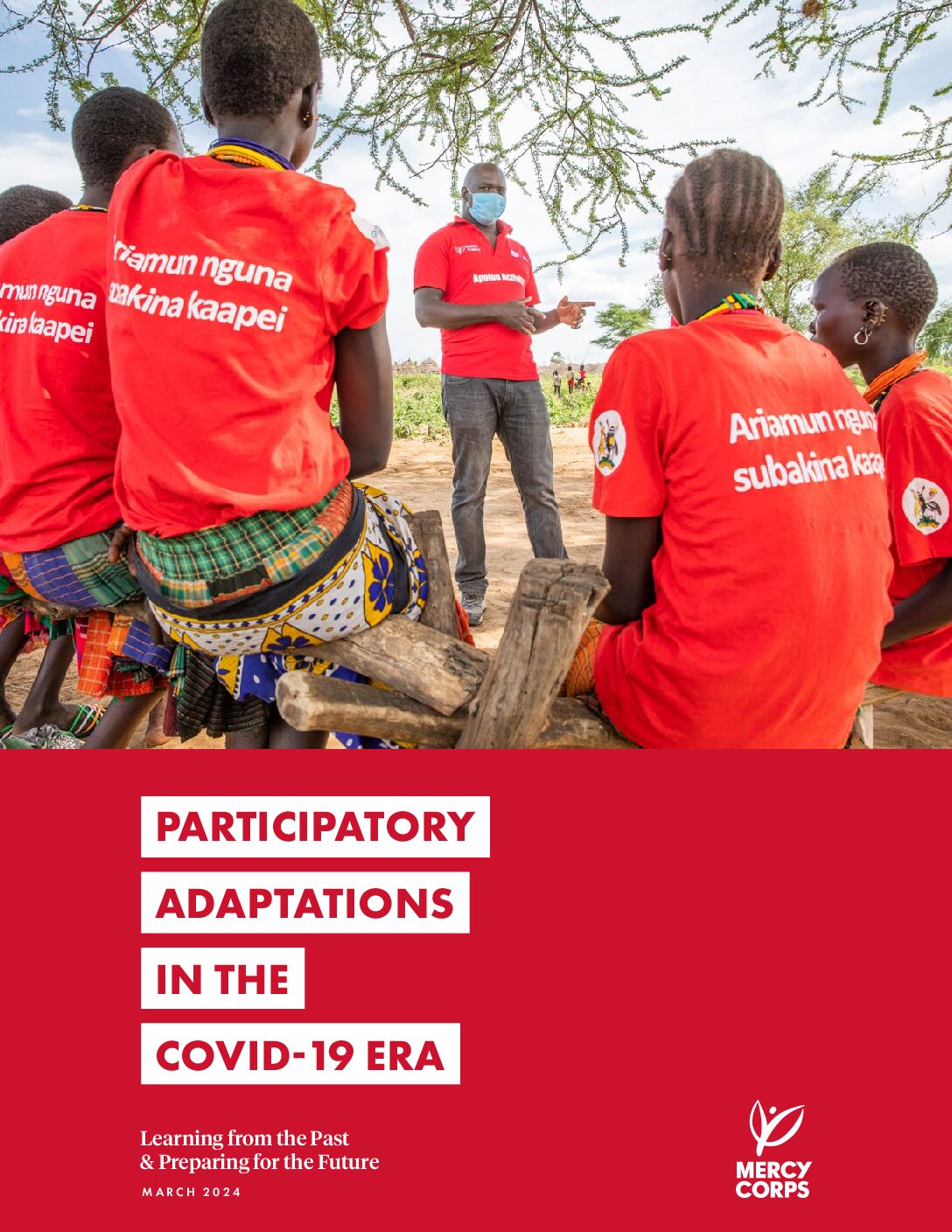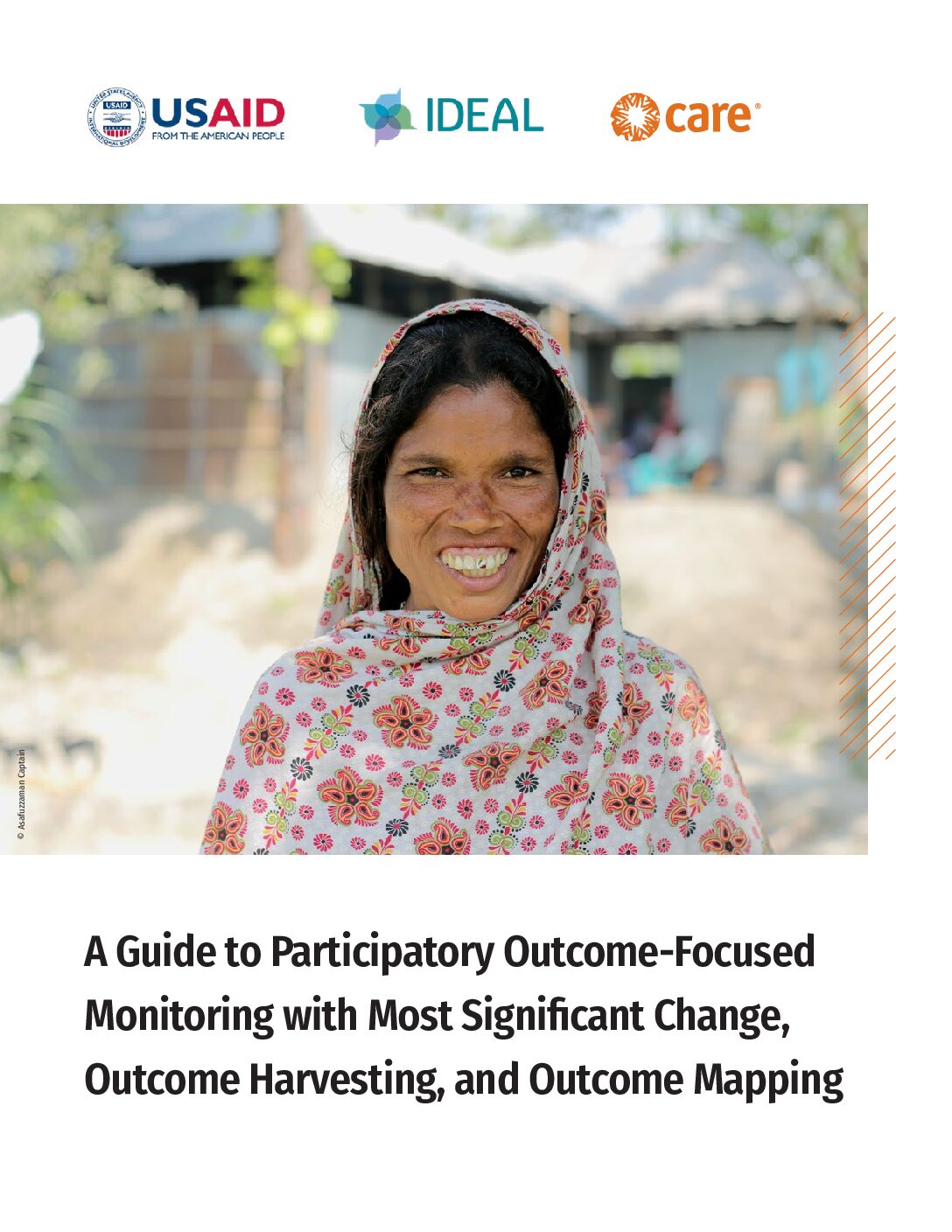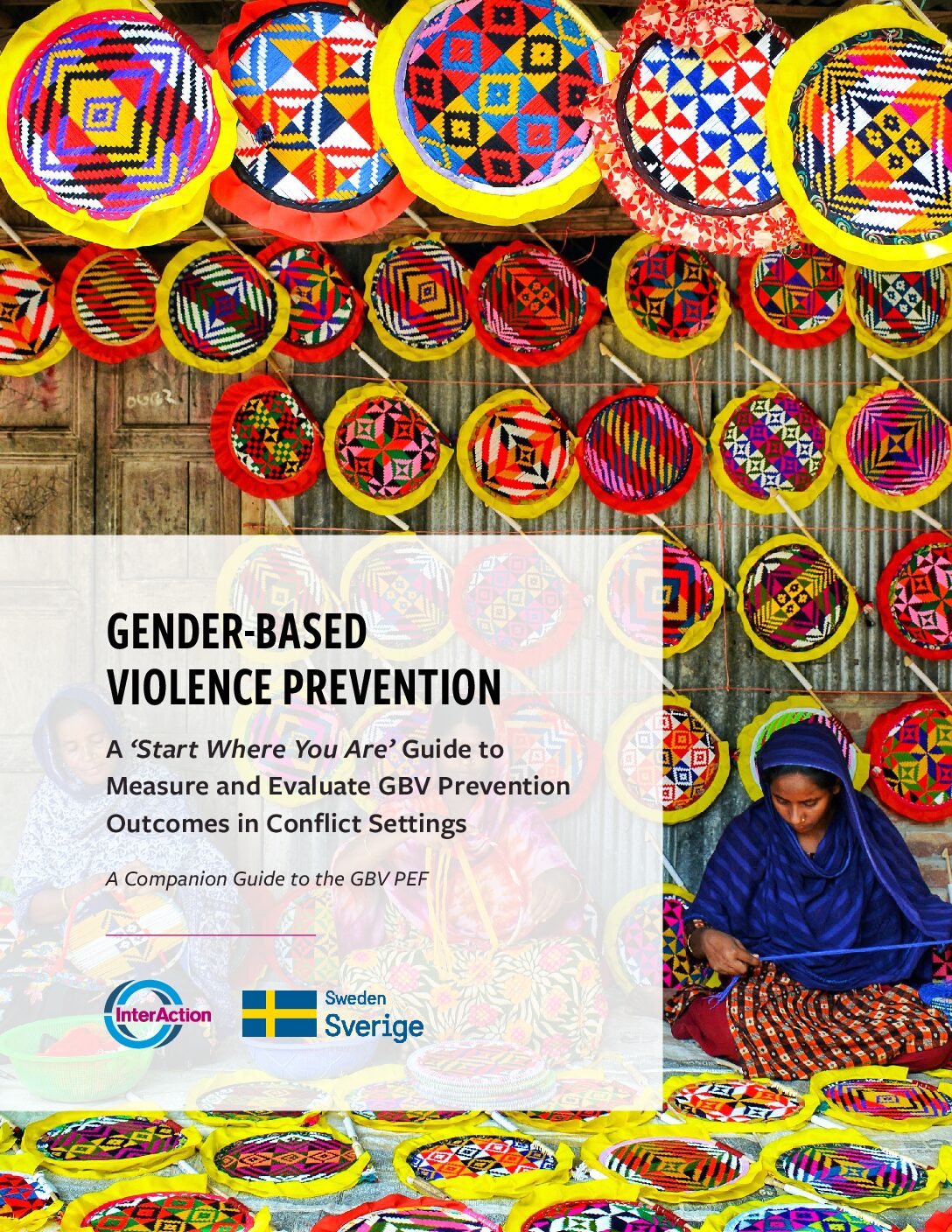WeWorld-GVC is an international NGO that drives and implements a Community Protection Approach (CPA) to protection that embraces all three RBP Key Elements. The CPA, awarded “First Place” in InterAction’s 2020 Results-Based Protection Good Practice Contest was submitted by Paloma Solo de Zaldivar, Francesco Michele, Betina Borova, and Ahmad Sharif. It promotes a community engagement and empowerment methodology to design Integrated protection programs (e.g. multi-disciplinary strategies) and provide operational tools to facilitate coordination and complementarity between different aid instruments in order to find sustainable solutions to a given population’s needs and protection issues. The CPA is built on many years of research and testing and can be tailored depending on the context.
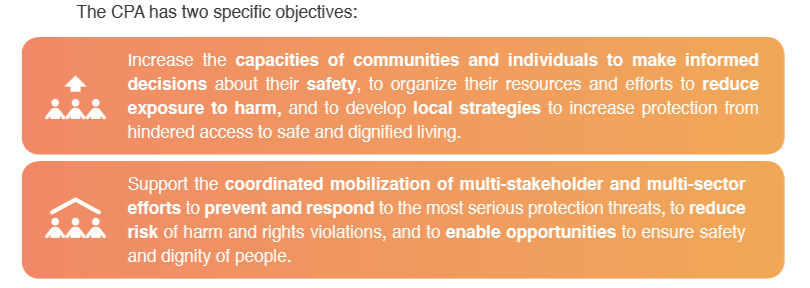
Community Protection Approach Handbook – Overview pg. 15
CLICK HEREFirst piloted in the Occupied Palestinian Territories, the approach is now being used by many NGOs and other actors in several country contexts. While the CPA is a great example of continuous, context-specific protection analysis that engages communities, one unique and important aspect is the second objective to support multi-stakeholder and multi-sector efforts to reduce risk for affected populations.
In certain country contexts, an established consortium or other group of actors–including protection and non-protection actors–who are familiar with the approach and tools capture qualitative and quantitative information from the individual, household, and institutional levels pertaining to their projects and sector. The tools help identify threats, vulnerabilities, and capacities from a set of quantitative indicators. This initial identification is then qualified through population engagement to further explore causes, consequences, coping strategies, and other dynamics. A wide range of engagement modalities is provided to adapt the approach to the specific context.
Overall, the CPA tools for engagement and data collection are designed to collect information about protection risks pertaining to different sectors. The data collected is input into a digital collective protection data dashboard. The dashboard synthesizes and collates information and data and categorizes it based on different categories, including the component of the risk equation (threat, vulnerability, and capacity). Information can be sorted by community or theme so the user can easily extract the information they require for their programming.
While the dashboard contains multiple levels of information, WeWorld-GVC can tailor the amount accessible to different actors depending on their involvement and needs, an important and sometimes challenging aspect of information sharing amongst partners. For example, those who collect the data have access to raw data, others–generally managers and some staff at the HQ level–may only have access to the aggregated analysis of information, and other decision-makers and some donors have access to still other parts of the dashboard.
From a multi-disciplinary perspective, one helpful page on the dashboard is one that displays all key protection risks alongside the various ongoing activities designed to address those protection risks by sector. This gives key actors within the response a snapshot of where collective efforts are concentrated. This information could then feed into program adaptation (or design if at the start of the project cycle) so organizations can ensure they’re delivering the most impactful programs given the other actors in the area and identified protection priorities.
The CPA may sound like a multi-sectoral needs assessment, however, the key aspect is in its continuous nature that creates a localized, continuous process of analysis and monitoring of the threats, vulnerabilities, and capacities of a given population. To do it well, this approach requires staff time and resources, but the result is a holistic understanding of the needs of the affected population and the building blocks for effective multi-disciplinary strategies.
